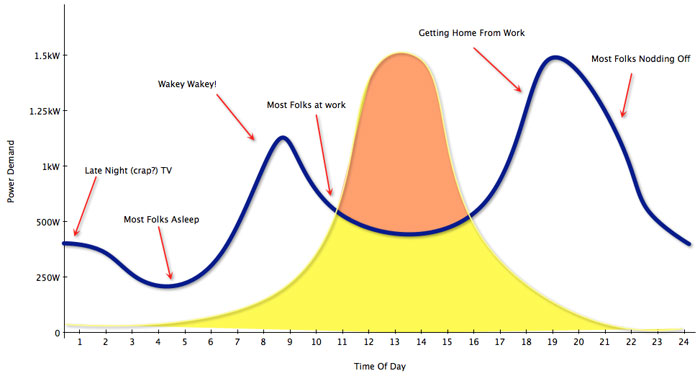How Is Solar Energy Used in Your Home?
(and how do you get paid for it?)
When buying solar power systems, it is super important to understand how your solar energy is used in your home. i.e how much electricity you currently use and at what times throughout the day you use it.
This is because your energy usage habits will drastically affect:
- How much your electricity bill is reduced by every month
- What kind of a return you’ll get from a home battery, either now or if you buy one in the future
- Your expected payback periods
The reason for this is that your usage habits will determine how much solar energy you export. Exported electricity is generally a lot less valuable to you than using it in your home. Expect to get paid 3-10c per kWh for exported electricity and pay out 25-35c per kWh to buy electricity from the grid.
To maximize your savings, you’ll want to do two things:
- First, minimize the amount of grid electricity you consume by using your own solar electricity instead.
- Second, maximize the amount of solar electricity you export for a solar feed-in tariff.
Years ago, solar was vastly more expensive than it is today, so to come out ahead it was important to match the size of your solar system to your daytime electricity consumption. But now rooftop solar costs a fraction what it used to most households should:
- Fill their roof with solar – or if you have plenty of room on your roof…
- Install at least 10kW.
To get you started, here’s a quick explanation of how solar energy is used in your home. Trust me this stuff is important if you want to understand what you are getting yourself into!
How solar energy is used (for dummies!):
You use your solar energy in one of two ways depending on whether, at any moment in time, you are:
1) consuming all your solar electricity in your home (using more then you generate)
or
2) exporting your solar electricity out to the grid (generating more than your house can use).
This is an important distinction because how you use your solar energy will determine how much you get paid for it and also what system size you should buy.
To get an idea of how solar power is used in a typical Aussie home with solar, have a look at this graph:
The blue line is the electricity use over 24 hours for an average home.
The yellow line is the typical output of a 1.5kW system.
By looking at where the 2 lines cross we can see the 2 modes of electricity generation quite nicely:
1) Consuming the solar electricity in your home (aka “Offsetting”)
The yellow area shows you the solar energy that is used up by your home’s appliances. At these times of the day your home will use any solar electricity that is coming out of your panels before it draws any electricity from the grid, so you save money by using less grid electricity.
The financial value per unit of electricity (or kWh) is simply what you pay per kWh for grid electricity. Typically 35c per kWh at time of writing (Jan 2015).
But what about the solar electricity that we don’t use in the home?
2) Exporting your electricity into the grid, building a credit.
The orange area in the graph above is the solar power that is exported out to the grid.
At these times of the day your solar panels produce more electricity than your household is currently using. That electricity flows backwards through your electricity meter and into the electricity grid.
If your meter is configured to export energy (which it should be!), then as your meter “spins backwards”, your bill is credited. By how much? Well that depends on the laws in your particular state and when you get to exporting electricity the rules change in most states. If you are getting a pittance for the electricity you export, then you want to try and export as little as possible!.
So it’s really important to understand the details of the local electricity deals that you can get, which often vary from utility to utility. It’s also vital to get a written quote from your installer on how much energy they expect you will offset and export, at what rates, compared to what you consume.
Check here to see the latest state by state solar feed in tariff information.
If you want to see how the feed in tariff in your state will affect the payback of a quoted solar system, have a play with our Solar Payback Calculator
